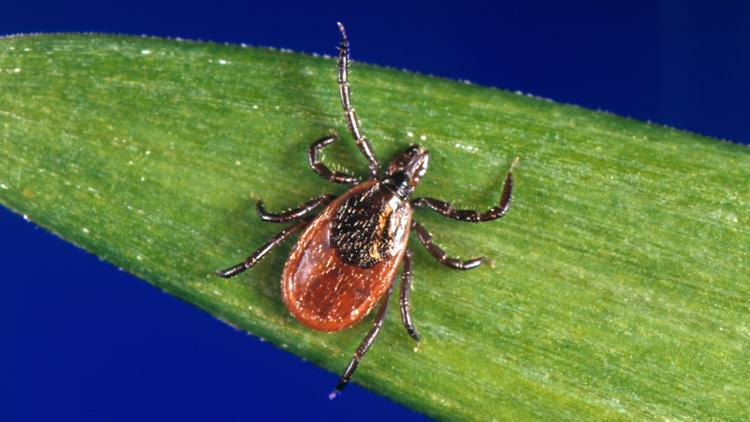SAN FRANCISCO — More people are going to the emergency room after being bitten by ticks this summer when compared to recent years, according to the Centers for Disease Control and Prevention.
While tick bites increase every summer, with another small spike in the fall, 2025's numbers are the worst since 2019, according to CDC data. Cases normally begin increasing in March with a peak in May and June before falling during the even warmer months of August and September.
According to CDC data, at least 134 people went to the hospital after being bitten by a tick in May alone, bringing this years ER visit total to 447 from January through the first week of July. Last year, the total ER visits for the entire year was 509. Total cases for the entirety of 2019 ended up at 600.
Those under 10 and over 70 years old have the highest rates of emergency room visits, according to the CDC.
As the weather warms, more people and more ticks are out and about, resulting in an increase in cases. There isn't one direct cause experts are able to point to why 2025 is worse than years past.
More than 31 million people, nearly 1 in 10, living in the United States might experience a tick bite each year, according to experts.
Ticks, small spider-like creatures that latch onto people and animals and drink their blood, can carry many diseases and are found across the entire United States, depending on the species they are. According to the Mayo Clinic, there are about nine species most common across the country.
They can spread pathogens that can cause human disease like Lyme Disease among others.
No matter what type of tick, or what state it's in, they're most often found in the wilderness and long grass after people were outside hiking, gardening or enjoying nature.
“Humans are outside more in summer so we hear about more tick infections,” said Sam Telford, an infectious diseases expert at Tufts University. But he urges caution year-round because “every season is tick season.”
The increase in exposure, and bites turning into hospital visits, can be attributed to climate change, human expansion into forested areas and overpopulations of deer, according to experts who spoke with the New York Times.
To keep yourself and your pets safe this summer, here's what to keep an eye out for.
How to check yourself for ticks
Ticks are usually found low to the ground, in leaf litter or grassy areas. They're such small creatures, the size varying from an apple seed, poppy seed or a grain of sand depending on what stage of life they're in, so they can be easily missed.
Check your clothing for ticks and do a full-body check including under the arms and behind ears, knees and in the hair.
“If you’re out all day long, try to do a quick check for ticks every few hours,” said Bobbi Pritt at the Mayo Clinic. “When you go back inside, take a shower. That will wash off any unattached ticks, and you’re also more likely to spot any other ticks."
Use tweezers to remove the tick and grasp it as close to the skin as possible to pull from the head. If you don’t have them handy, you can also use your fingernails, the edge of a credit card or any semi-sharp object.
How to keep ticks away
The best approach is to minimize tick exposure altogether.
Bug sprays containing ingredients such as DEET can be sprayed on exposed skin to ward off ticks and mosquitos, said Telford.
Wear long sleeves and pants, and you can also spray clothing with repellents containing permethrin, a chemical similar to a natural ingredient in chrysanthemums that makes ticks avoid the flowers.
The Environmental Protection Agency suggests tucking your shirt into your pants, and pants into socks or ankle high boots to prevent gaps in clothing which could expose your skin. They also suggest wearing light-colored clothing so tick spotting is a little easier, since they're usually a brown, orange or black color.
Protect your pets from ticks
Don’t forget to pay attention to outdoor pets. Medications can prevent fleas and ticks from attaching to a dog's skin. But it’s still a good idea to check the fur after being outside.
“Wherever pets can’t easily groom themselves, that’s where the ticks will be – on the ears, around the muzzle area, under the collar, between the toes,” said Thangamani.
Animals roaming outdoors can also bring ticks into the house.
“If pets bring ticks in, a tick can live in the house for months until it finds its next blood meal,” which could be another household member, he said.
What to do after a tick bite
After removing the tick, keep an eye on the skin around the bite. If a rash or flu-like symptoms appear within several days or weeks, see a doctor.
The most commons symptoms after being bitten by a tick are fever and/or chills, aches and pains, depending on what type of tick you were bitten by, according to the CDC.
The CDC does not recommend tick testing because results may not be reliable.
The Associated Press contributed to this report.



